
Mitsubishi Adds Wi-Fi, Bluetooth, Soundbar And More To New HDTV Line
When you think of HDTVs, you probably think of names like Sony, Vizio, Toshiba or Sharp. Maybe even LG. But Mitsubishi? It's true, they make televisions, and some pretty high-end ones at that. The company hasn't really had a super high profile TV since the LaserVue set a few years ago, though that one didn't exactly take off due to the prohibitive MSRP. Aiming to hit a sweeter pricing spot, the company has introduced their third-generation Unisen Immersive Sound LED TVs, which do a lot more than just show content
Read More ...
Amid Tough Times, Rubinstein Remains Committed To Palm’s Success
Palm has faced more than its fair share of setbacks in the past several months including disappointing sales of the Pre Plus and Pixi Plus with Verizon Wireless, revenue shortfalls, and rumors that the company might be sold. Many people are wondering if Palm has a future, and if so, what that future looks like. Recently, CEO Jon Rubinstein sat down with Fortune's Adam Lashinsky and put his cards on the table. Rubinstein was relatively candid in the interview, and admitted the smartphone maker has "hit a speed
Read More ...
HP Chip Breakthrough: CPUs Could Store And Process Data
Currently, transistors can be produced as small as 22nm. Most are produced at 45nm or larger. But even the most optimistic engineers admit that this squishing process that has enabled the CPU world to follow Moore's Law (double in power every 2 years) won't work forever. Eventually, a new type of processor building must occur if we expect our chips to continue to get faster, and HP is working hard to discover that new route before we hit a wall using the current technique. According to new research published
Read More ...
Mophie Brings Juice Pack Air Case/Charger To iPod Touch
We don't exactly get along with batteries very often here at HotHardware. Most of 'em tend to underwhelm us, and the one's that impress us (Apple's iPad rings a bell) are few and far between. Mophie loves the fact that most handheld devices have paltry battery life results, because that very problem encourages consumers to seek out solutions for extending the life of their favorite gadgets. The company has become somewhat of an icon in the iPhone charging space, with their Juice Pack Air amongst the most highly
Read More ...
HP Chip Breakthrough: CPUs Could Store And Process Data
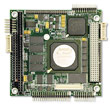 Currently, transistors can be produced as small as 22nm. Most areproduced at 45nm or larger. But even the most optimistic engineersadmit that this squishing process that has enabled the CPU world tofollow Moore's Law (double in power every 2 years) won't work forever.Eventually, a new type of processor building must occur if we expectour chips to continue to get faster, and HP is working hard todiscover that new route before we hit a wall using the currenttechnique.
Currently, transistors can be produced as small as 22nm. Most areproduced at 45nm or larger. But even the most optimistic engineersadmit that this squishing process that has enabled the CPU world tofollow Moore's Law (double in power every 2 years) won't work forever.Eventually, a new type of processor building must occur if we expectour chips to continue to get faster, and HP is working hard todiscover that new route before we hit a wall using the currenttechnique.According to new research published by the company, new memristorscould be that missing link. These tiny devices were actually thoughtand proposed around 40 years ago, but they just started fabrication in2008. Now, HP has found that they can be used to not only crunch datalike a typical CPU, but store information like RAM. Basically, CPUsbuild with these new memristors could be much more efficient than usingthe CPU + memory tandem that we rely on today.

HP says this discovery represents the fourth basic circuit element inelectrical engineering, and it can perform logic, enabling computationto one day be performed in chips where data is stored, rather than on aspecialized central processing unit. There's still no definite timeframe for which HP intends to ship these, and by our estimation,there's still a lot of traditional CPUs to be built before we hop on anentirely different bandwagon. But just look at the GPU market. Tenyears ago, the GPU only handled a very small amount of tasks, andtoday, these cards handle very advanced computations on their own withno real help from the CPU. Could RAM one day become unimportant as it'sintegrated into the CPU? We, and our benchmarks, are eager to find out.
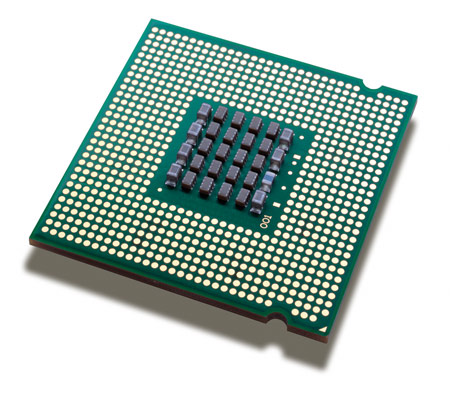
Highlights
- The latest findings about the memristor are detailed in a paper published this week in the journal “Nature†by six researchers at HP’s Information and Quantum Systems Lab, led by R. Stanley Williams. These developments follow the HP Labs team’s first demonstration of the existence of the memristor in 2008.
- HP has created development-ready architectures for memory chips using memristors and believes it is possible that devices incorporating the element could come to market within the next few years.
- HP researchers also have designed a new architecture within which multiple layers of memristor memory can be stacked on top of each other in a single chip. In five years, such chips could be used to create handheld devices that offer ten times greater embedded memory than exists today or to power supercomputers that allow work like movie rendering and genomic research to be done dramatically faster than Moore’s Law suggests is possible.
- Eventually, memristor-based processors might replace the silicon in the smart display screens found in e-readers and could one day even become the successors to silicon on a larger scale.
Memristor chips and energy use
- Memristors require less energy to operate and are faster than present solid-state storage technologies such as flash memory, and they can store at least twice as much data in the same area.
- Memristors are virtually immune from radiation, which can disrupt transistor-based technologies – making them an attractive way to enable ever smaller but ever more powerful devices.
- Because they do not “forget,†memristors can enable computers that turn on and off like a light switch.
Read More ...
Mitsubishi Adds Wi-Fi, Bluetooth, Soundbar And More To New HDTV Line
 When you think of HDTVs, you probably think of names like Sony, Vizio,Toshiba or Sharp. Maybe even LG. But Mitsubishi? It's true, they maketelevisions, and some pretty high-end ones at that. The company hasn'treally had a super high profile TV since the LaserVue set a few yearsago, though that one didn't exactly take off due to the prohibitiveMSRP. Aiming to hit a sweeter pricing spot, the company has introducedtheir third-generation Unisen Immersive Sound LED TVs, which do a lotmore than just show content coming from your cable box.
When you think of HDTVs, you probably think of names like Sony, Vizio,Toshiba or Sharp. Maybe even LG. But Mitsubishi? It's true, they maketelevisions, and some pretty high-end ones at that. The company hasn'treally had a super high profile TV since the LaserVue set a few yearsago, though that one didn't exactly take off due to the prohibitiveMSRP. Aiming to hit a sweeter pricing spot, the company has introducedtheir third-generation Unisen Immersive Sound LED TVs, which do a lotmore than just show content coming from your cable box.This new line is centered around a 55" LED TV (sizes from 40" to 55"are available) with a 1080p panel, but what makes them stand out fromthe rest is the massive soundbar that's built into the bottom. Alltold, there are 16 total speakers that reproduce 5.1 channel surroundsound, so buyers of this wouldn't need to invest in a separate soundsystem. The other big new feature is StreamTV, which does what itsounds like it would. This TV is Web-compatible, so when you plug in anEthernet cable to get it online, StreamTV allows viewers to see allsorts of online content from Vudu, Pandora, Flickr, Picasa, Facebook,Twitter, Associated Press, The New York Times, etc.
If you don't have a hard wired connection nearby, the built-in Wi-Fiwill take care of that for you. There's even Bluetooth streaming, whichis very rare to find integrated on a TV. This allows users to sendaudio from their iPod Touch, cellphone or other device right to thetelevision. And really, this is all just the tip of the iceberg; thecompany's other lines offer somewhat less features with a lower MSRP,all of which is detailed just below.
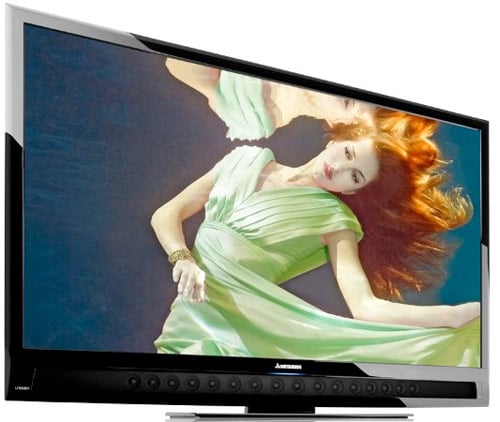
Mitsubishi Digital Electronics America Announces Its 2010 Unisen Immersive Sound TVs
New Edge-Lit LED Line-Up Includes Wireless Streaming Internet Media and New 55-Inch Screen Size
IRVINE, Calif. --(Business Wire)-- Apr 08, 2010 Mitsubishi Digital Electronics America, Inc. today unveiled the third generation of its one-of-a-kind Unisenâ„¢ Immersive Sound LED TVs. The 2010 line is packed with significant, new features and supplants last year's 52-inch models with a slim, impressive 55-inch screen size. Each new premium LED TV delivers the optimal blend of superior picture performance with unparalleled immersive sound technology, providing viewers with a complete sensory experience. Unisen will allow consumers to enjoy concert quality sound in their homes without the clutter of separate home theater components. The Unisen Immersive Sound LED TV 2010 line-up will feature screen sizes ranging from 40 to 55 inches.
"Our unique brand of Unisen Immersive Sound LED TVs fill a significant void in the marketplace, by providing consumers with an efficient, streamlined home entertainment experience," said Max Wasinger, executive vice president of sales and marketing, Mitsubishi Digital Electronics America. "Unisen continues to stand out in the endless sea of flat panel TVs, by uniting beautiful LED edge-lit imagery with fully integrated, multi-speaker immersive sound technology."
Key features for 2010
* Edge-lit LED: This cutting-edge backlighting technology bends and diffuses light for a sharper, brighter image. An added bonus: The arrangement of the LEDs along the edge of the screen makes an ultra-thin profile possible. LED-lit TVs are also more energy efficient than conventional CCFL backlit LCD TVs.
* Immersive Sound Technology features 16 intelligent speakers that direct perfectly balanced audio waves beside and behind the user to reproduce 5.1 surround sound and create an unparalleled entertainment experience. Through the use of an advanced algorithm, the sound technology delays the sound beams and projects them independently from the 16 speakers at varying intervals, to create fully immersive surround sound.
* StreamTVâ„¢ gives viewers instant access to an extensive library of high-quality entertainment and social media content. Grab your Unisen remote and choose from over 100 different streaming applications, including Vudu movies, Pandora, Flickr, Picasa, Facebook, Twitter, Associated Press, The New York Times and more.
* Integrated Wireless Internet allows for seamless connectivity to your wireless home network, to stream your favorite movies and music from the internet to your Unisen Immersive Sound LED TV.
* Bluetooth Audio Streaming lets you wirelessly stream audio from any Bluetooth® A2DP device (such as an iTouch/iPhone or Blackberry) to your Unisen TV. Now you can listen to your favorite music through Unisen's Immersive Sound Technology, and still take your playlist with you wherever you go.
All 154, 164 and Diamond 265 series Unisen Immersive Sound LED TV models for 2010 include Edge-Lit LED Backlight, Multi-Speaker Immersive Sound Technology with Variable Subwoofer Output and Center Channel Mode, StreamTV™ Internet Media, new Thin Depth Design, True120Hz, Energy Star™ 4.0 Qualified, Clear Contrast Panel, Plush 1080p® 5G 12-bit Digital Video Processing, 6-Color Processor™, 4 HDMI™, Deep Color™ and x.v.Color™, Easy Connect™, USB Media Input, and Detachable IEC Power Cord.
The MDEA 164 series is available in 40, 46 and new 55-inch screen sizes, and in addition to the features above, includes 16-Speaker Immersive Sound Technology, Built-in Wireless Internet, Bluetooth A2DP Audio Streaming, EdgeEnhanceâ„¢, DeepField Imagerâ„¢ and Advanced Video Calibration.
The MDEA Diamond 265 series is available in 46 and new 55-inch screen sizes. In addition to all features within the 154 and 164 series, each Diamond model includes 18-Speaker Immersive Sound Technology, True240Hz, new Thin Depth Design with Blue Light Accent, Plush1080p® 5G 18-Bit Digital Video Processing, iPhone Remote Control App, Audio Calibration Microphone, Perfect Color™, PerfectTint™, ISFccc® Advanced Video Adjustments, NetCommand, and Wired IR input.
"It's true that, for 2010, we're taking sound and picture quality to a higher level, but the core strength of the Unisen Immersive Sound LED TV line remains the same," says Frank DeMartin, vice president of marketing, Mitsubishi Digital Electronics America. "We're giving consumers the television experience of an ultra high-end home theater system, seamlessly integrated into a sleek flat panel package you can only get from Mitsubishi."
Availability and Suggested Retail Pricing
154 Series
LT-55154 - $2,499.00
164 Series
LT-40164 - $1,699.00 LT-46164 - $2,099.00 LT-55164 - $2,699.00
265 Series
LT-46265 - $2,499.00 LT-55265 - $3,199.00
Read More ...
New And Different iPad Reviews
New And Different iPad Reviews,.........
http://www.youtube.com/watch?v=BiDHUNiurqY&feature=player_embedded
http://www.youtube.com/watch?v=-i5i3ozyPS8&feature=player_embedded
http://www.youtube.com/watch?v=lAl28d6tbko&feature=player_embedded
http://www.youtube.com/watch?v=3hWlvXY6f1Q&feature=player_embedded
These just floored me. A true waste of money for no good reason except trying to be cool, and not even coming close.
Read More ...
ViewSonic Introduces VEB620 And VEB625 Ereaders
 We fully expect the amount of E Ink-based ereaders to dwindle in thecoming years now that the iPad has been introduced, bringing full-colorreading and 10+ hours of battery life to reality. But we're not quitethere yet, and the ultra-cheap ereader market is still thriving. WithAmazon's Kindle setting the bar at around $259, other companies withless marketing dollars are having to approach things differently,mostly by hacking prices and trying not to hack too many features inthe process.
We fully expect the amount of E Ink-based ereaders to dwindle in thecoming years now that the iPad has been introduced, bringing full-colorreading and 10+ hours of battery life to reality. But we're not quitethere yet, and the ultra-cheap ereader market is still thriving. WithAmazon's Kindle setting the bar at around $259, other companies withless marketing dollars are having to approach things differently,mostly by hacking prices and trying not to hack too many features inthe process.ViewSonic is a name not normally associated with the ereader market,but that very company has just introduced a new pair of them to competethe barebones reader space. The VEB620 and VEB625 both have 6" 800x600E Ink displays, 2GB of storage space, an SD expansion slot, nativesupport for PDF/ePUB/RTF/TXT files, and the latter even has Wi-Fibuilt-in. Both are available now in Europe, but there's no clear wordon when they will ship to America. As for pricing? The 620 is £175,while the 625 is listed at £205.

We must say, both are styled fairly nicely for ereaders, and while theywon't check your e-mail, they'll definitely let you get a lot ofreading done; ViewSonic says that the Li-ion battery will last for 6500page turns, or enough to read around 20 books straight.
Read More ...
Highton 10" Tablet PC Might Be A Competitor (If It Ships)
 It's a Tablet PC kind of year in 2010, and as if the iPad's launchwasn't any indication that these things are gaining steam, theonslaught of alternatives from relative no-names should cement the factin your brain. Just about everyone seems to be coming out with theirown tablet these days, and even a company called Highton is getting inon the action.
It's a Tablet PC kind of year in 2010, and as if the iPad's launchwasn't any indication that these things are gaining steam, theonslaught of alternatives from relative no-names should cement the factin your brain. Just about everyone seems to be coming out with theirown tablet these days, and even a company called Highton is getting inon the action.Surfacing over at eCrater, this 10" tablet PC is slightly larger thanthe iPad yet slightly smaller than the JooJoo, and it boasts somerather unusual specifications. In fact, this feels more like a netbookthan many other tablets out there, but of course, without a keyboardand with a touch panel to navigate. Specifications include a 1.6GHzAtom N270 CPU, support for Windows XP or Linux, a 1024x600 resolution,1GB of DDR2 memory (up to 2GB can fit), and a 2.5" hard drive with 160,250 or 320GB of capacity.
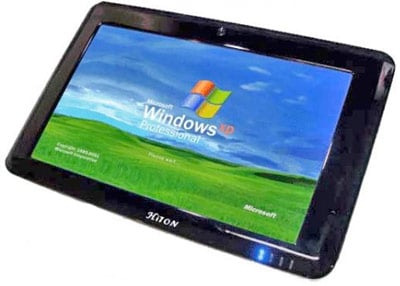
There's also Wi-Fi, three USB 2.0 ports, a VGA output, audio in/out andeven a card reader. It's pretty well appointed, but it's thicker thanmany other tablets. It's also coming from a company that most everyonehas no impressions on, and the $359 price tag almost feels too good tobe true. But then again, these specs feel a lot like those on the HP Slate, which is going to sell for around $100 or so more whenever itships. Something tells us these prices will only be getting lower ascompetition increases.
Read More ...
Mophie Brings Juice Pack Air Case/Charger To iPod Touch
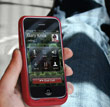 We don't exactly get along with batteries very often here atHotHardware. Most of 'em tend to underwhelm us, and the one's thatimpress us (Apple's iPad rings a bell) are few and far between. Mophieloves the fact that most handheld devices have paltry battery liferesults, because that very problem encourages consumers to seek outsolutions for extending the life of their favorite gadgets.
We don't exactly get along with batteries very often here atHotHardware. Most of 'em tend to underwhelm us, and the one's thatimpress us (Apple's iPad rings a bell) are few and far between. Mophieloves the fact that most handheld devices have paltry battery liferesults, because that very problem encourages consumers to seek outsolutions for extending the life of their favorite gadgets.The company has become somewhat of an icon in the iPhone chargingspace, with their Juice Pack Air amongst the most highly regarded inthe industry. For those who somehow don't have a problem with thebattery life of their iPhone (or who just don't own one at all), theJuice Pack Air is a slide-on case that serves two purposes: it keepsthe phone safe from bumps and drops, and it provides an additionalbattery that can be switched on at any time. When used, it can providemultiple hours of additional talk time, and while the extra bulge isnoticeable, it's not terribly awful given the benefit of extra life.
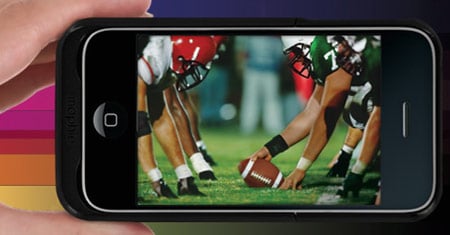
Today, Mophie is launching into another market with thesixth-generation Juice Pack Air. This one, however, is made for Apple'siPod touch, which just so happens to own a lion's share of the mobilemedia player market. The device will fit onto the rear of the iPodtouch in the same manner as described above for the iPhone, and it willprovide 7 extra hours of battery life. It will ship in red, blue orblack colors, and it will also act as a protective case and include apass-through USB cable that enables users to simultaneously charge andsync an iPod touch to iTunes without having to remove it from the JuicePack Air.
It's available now for the latest generation of iPod touch handhelds for $79.95.

Key features and benefits include:
- Battery Extender and Case in One – the juice pack offers the convenience of an extended battery life and the protection of a case, all with an ergonomically designed, soft-touch, non-slip rubberized finish.
- Pass-through USB – Included USB cable enables you to simultaneously charge and sync your iPod touch to iTunes without having to remove it from the juice pack air.
- Advanced Battery Technology – Intelligent power distribution instructs the iPod touch to always drain out the juice pack first. When you're done with the juice pack air for iPod touch, simply detach the case and you will still have a fully charged iPod touch. Highly condensed lithium polymer battery delivers an incredible amount of juice in a small form factor and features built in overcharge, short circuit and temperature protection.
- Four Light LED Battery Status Indicator – An Integrated LED status indicator tells you exactly how much “juice†is left and also displays how much time remains during the charging process.
- Twice the Power – a full charged juice pack air gives users:
- Up to additional 30 hours of Audio Playback
- Up to additional 7 hours Video Playback
Read More ...
My rigggg ~~ check it out
Take a look
Read More ...
What does your cable managment look like??
Show me what your cable management is like..
i'll show you one from one of my rigs:
Read More ...
Amid Tough Times, Rubinstein Remains Committed To Palm’s Success
 Palm has faced more than its fair share of setbacks in the past several months including disappointing sales of the Pre Plus and Pixi Plus with Verizon Wireless, revenue shortfalls, and rumors that the company might be sold. Many people are wondering if Palm has a future, and if so, what that future looks like. Recently, CEO Jon Rubinstein sat down with Fortune's Adam Lashinsky and put his cards on the table.
Palm has faced more than its fair share of setbacks in the past several months including disappointing sales of the Pre Plus and Pixi Plus with Verizon Wireless, revenue shortfalls, and rumors that the company might be sold. Many people are wondering if Palm has a future, and if so, what that future looks like. Recently, CEO Jon Rubinstein sat down with Fortune's Adam Lashinsky and put his cards on the table.Rubinstein was relatively candid in the interview, and admitted the smartphone maker has "hit a speed bump." When asked about a potential buyout, Rubinstein skirted the issue and said Palm has "$590 million in the bank" and "a plan to take us to profitability." Even with some cash and a plan, however, he admitted that the company will "have to be frugal to survive."
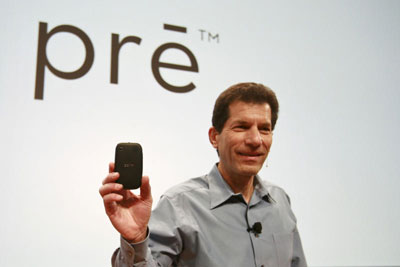
When talking about the disappointing sales figures with the Pre Plus and Pixi Plus on Verizon Wireless, Rubinstein suggested one of the major failures was insufficient training of Verizon's in-store sales staff. To help with this issue, Rubinstein has dispatched brand ambassadors into Verizon stores to help train the staff on webOS and Palm products.
Many people are wondering if Palm has a new phone or a major update for WebOS as part of its plan to survive. Rubinstein wouldn't give any specifics during the interview, but he did say that Palm is continuing to invest in engineering for both WebOS and new product development. He also defended WebOS, calling it "arguably the best mobile operating system out there," and pointed out that it offers "real multitasking," capabilities to share and edit video, Synergy, and immersive 3D gaming.
Rubinstein made it clear in the interview that he believes Palm still has a good chance of turning things around and becoming successful again. What do you think? Will the company survive on its own, or will another company come along and buy them out? Would a new WebOS phone help the company's chances of survival?
Read More ...

No comments:
Post a Comment